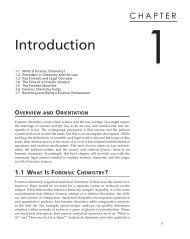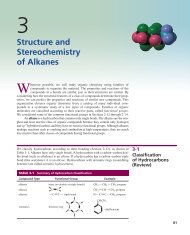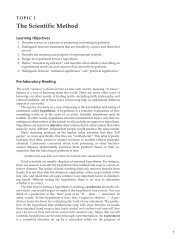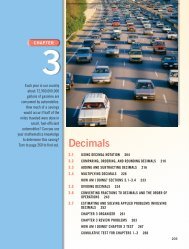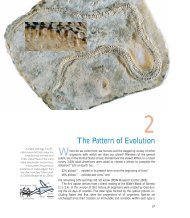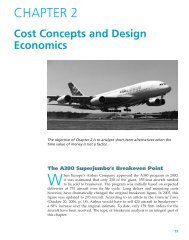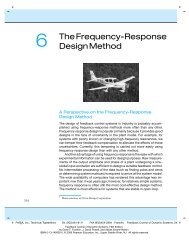CHAPTER 3 - Educators
CHAPTER 3 - Educators
CHAPTER 3 - Educators
You also want an ePaper? Increase the reach of your titles
YUMPU automatically turns print PDFs into web optimized ePapers that Google loves.
90 <strong>CHAPTER</strong> 3/COST-ESTIMATION TECHNIQUES<br />
for the 200-MW plant in Example 3-6, we find that the current cost of a 100-MW<br />
plant is<br />
CA = $300 million<br />
0.79 100 MW<br />
200 MW<br />
CA = $300 million × 0.58 = $174 million.<br />
3.4.2 Learning and Improvement<br />
A learning curve is a mathematical model that explains the phenomenon of<br />
increased worker efficiency and improved organizational performance with<br />
repetitive production of a good or service. The learning curve is sometimes<br />
called an experience curve or a manufacturing progress function; fundamentally, it<br />
is an estimating relationship. The learning (improvement) curve effect was first<br />
observed in the aircraft and aerospace industries with respect to labor hours<br />
per unit. However, it applies in many different situations. For example, the<br />
learning curve effect can be used in estimating the professional hours expended<br />
by an engineering staff to accomplish successive detailed designs within a family<br />
of products, as well as in estimating the labor hours required to assemble<br />
automobiles.<br />
The basic concept of learning curves is that some input resources (e.g.,<br />
energy costs, labor hours, material costs, engineering hours) decrease, on a peroutput-unit<br />
basis, as the number of units produced increases. Most learning curves<br />
are based on the assumption that a constant percentage reduction occurs in, say,<br />
labor hours, as the number of units produced is doubled. For example, if 100 labor<br />
hours are required to produce the first output unit and a 90% learning curve is<br />
assumed, then 100(0.9) = 90 labor hours would be required to produce the second<br />
unit. Similarly, 100(0.9) 2 = 81 labor hours would be needed to produce the fourth<br />
unit, 100(0.9) 3 = 72.9 hours to produce the eighth unit, and so on. Therefore, a 90%<br />
learning curve results in a 10% reduction in labor hours each time the production<br />
quantity is doubled.<br />
Equation (3-5) can be used to compute resource requirements assuming a<br />
constant percentage reduction in input resources each time the output quantity<br />
is doubled.<br />
Zu = K(u n ), (3-5)<br />
where u = the output unit number;<br />
Zu = the number of input resource units needed to produce output unit u;<br />
K = the number of input resource units needed to produce the first<br />
output unit;<br />
s = the learning curve slope parameter expressed as a decimal<br />
(s = 0.9 for a 90% learning curve);<br />
log s<br />
n = = the learning curve exponent.<br />
log 2



